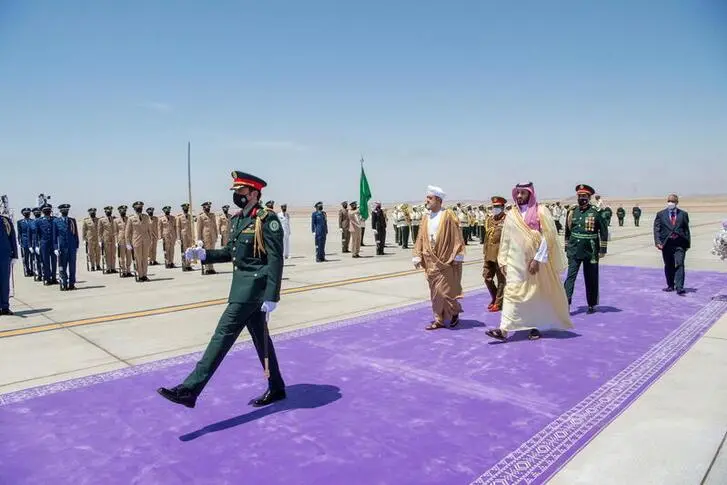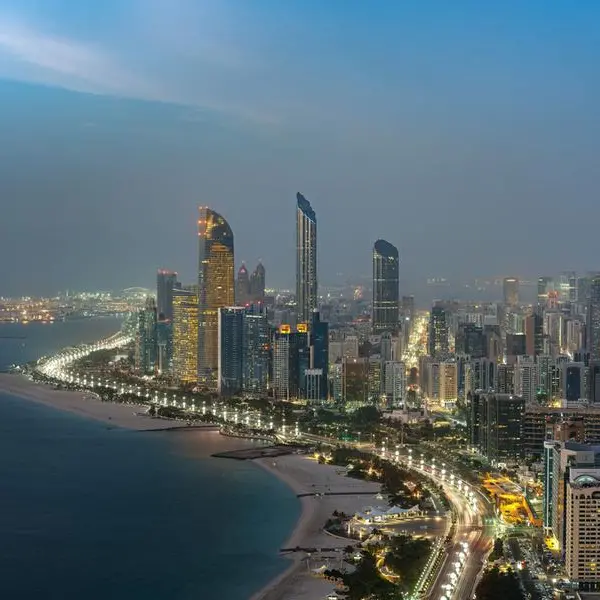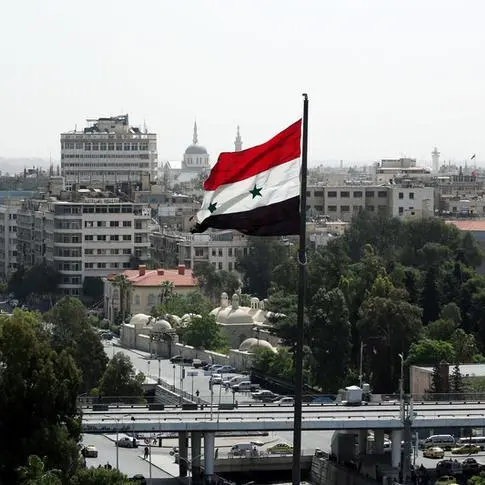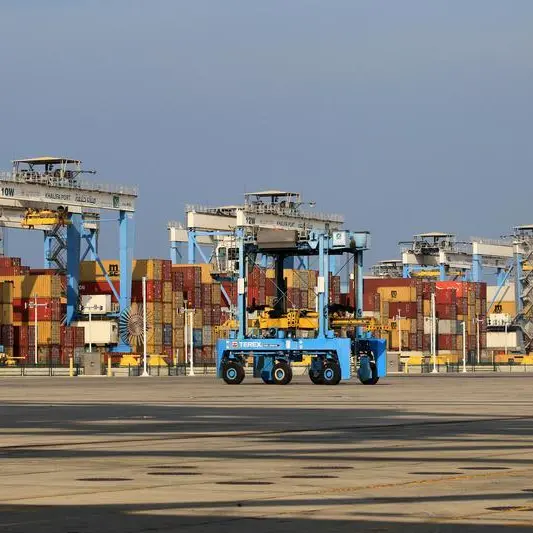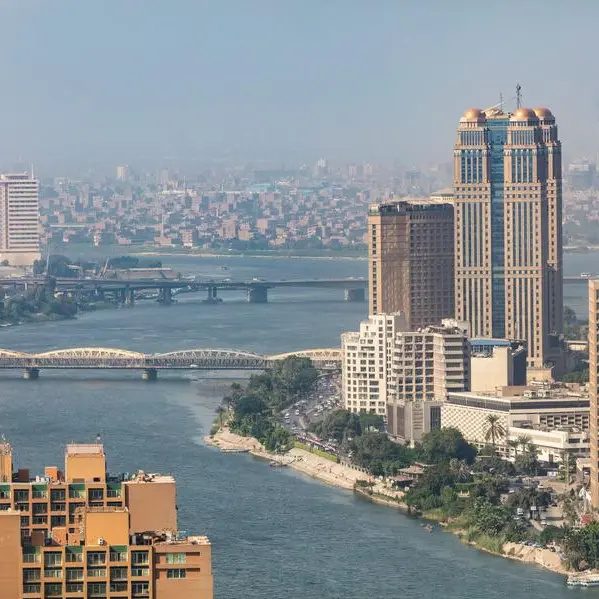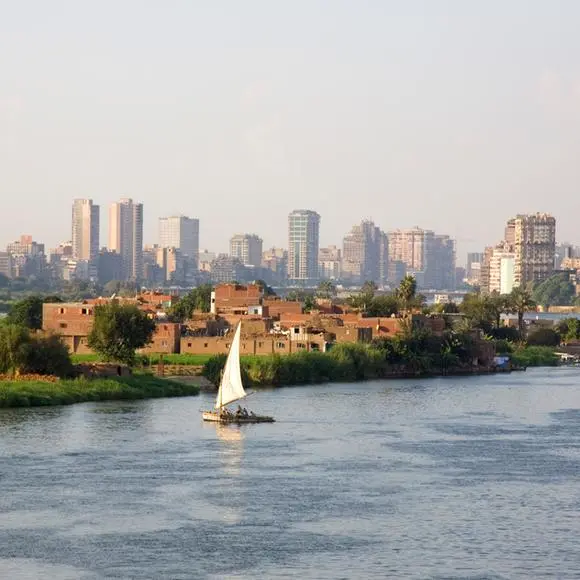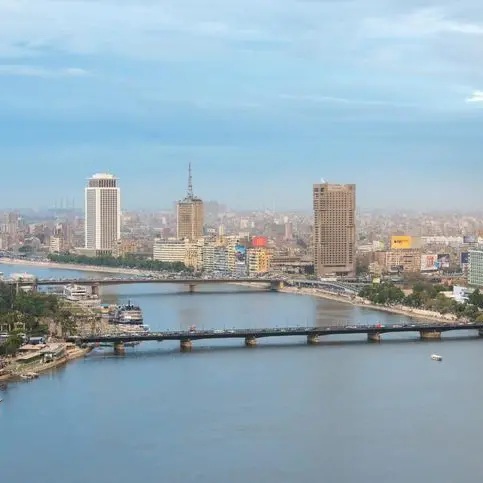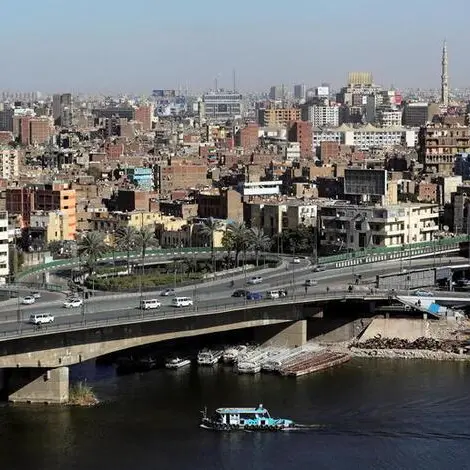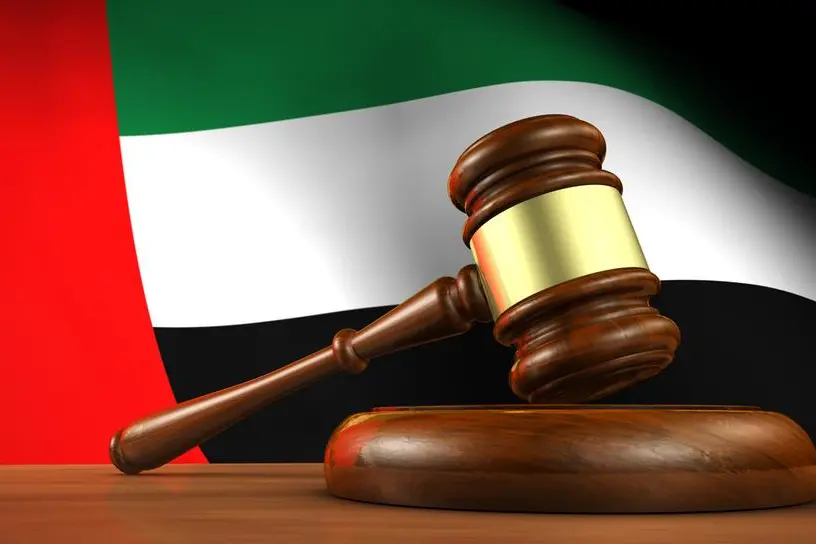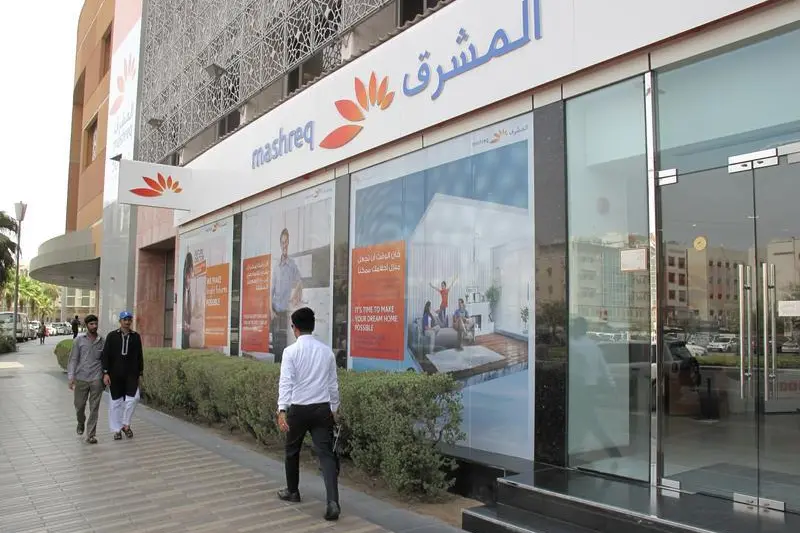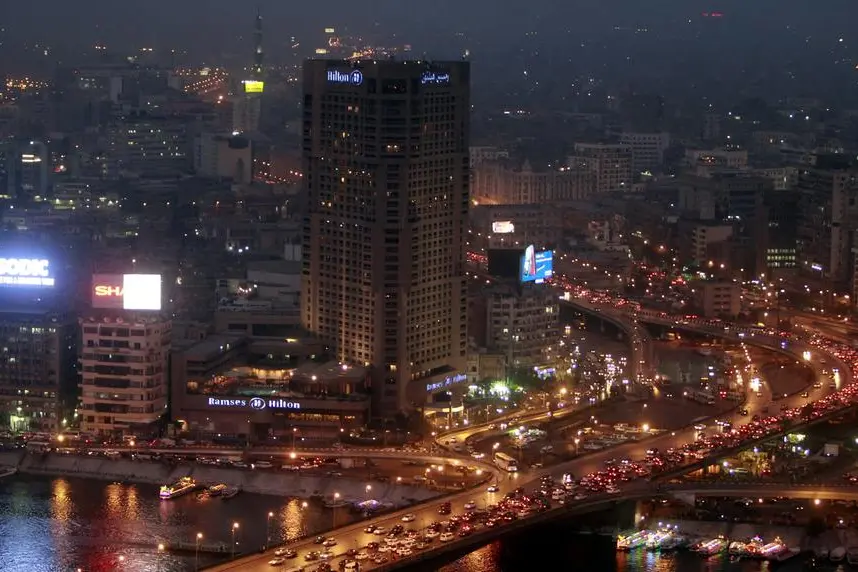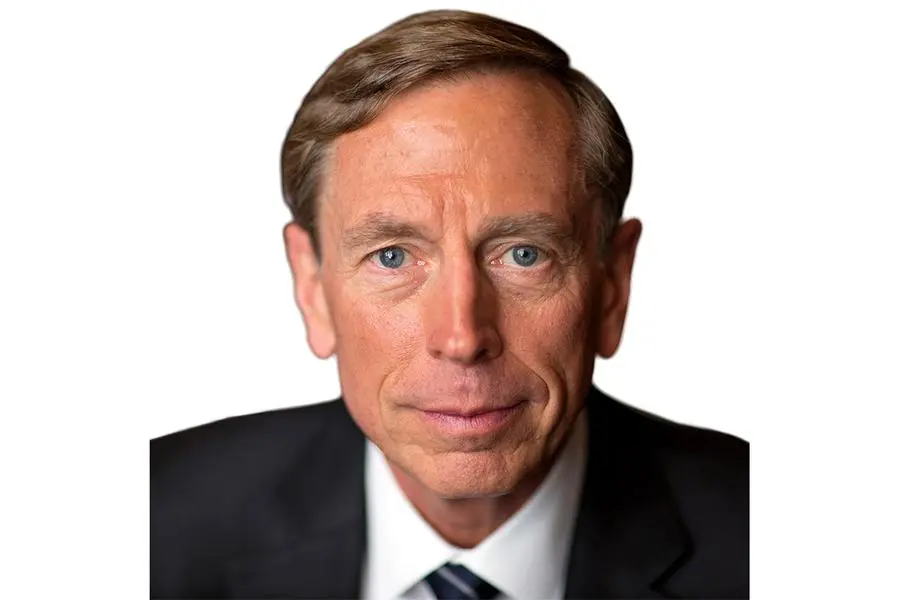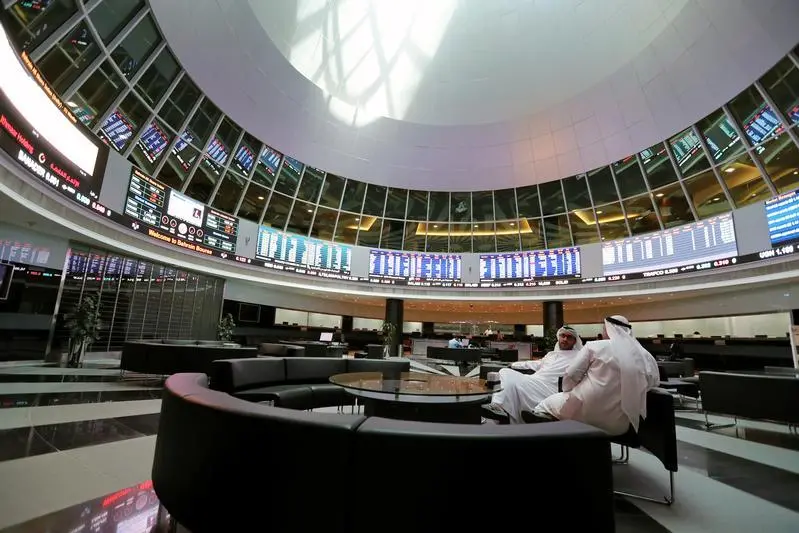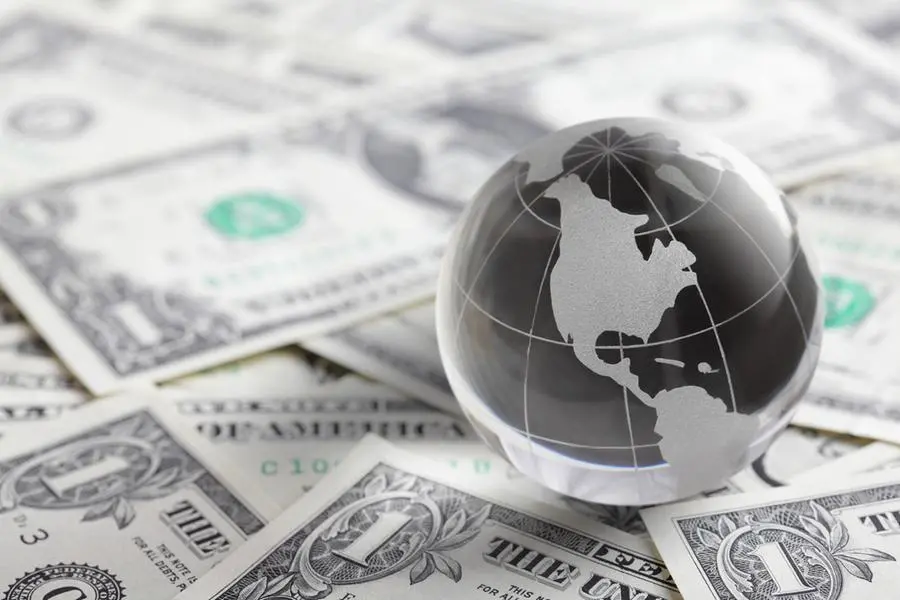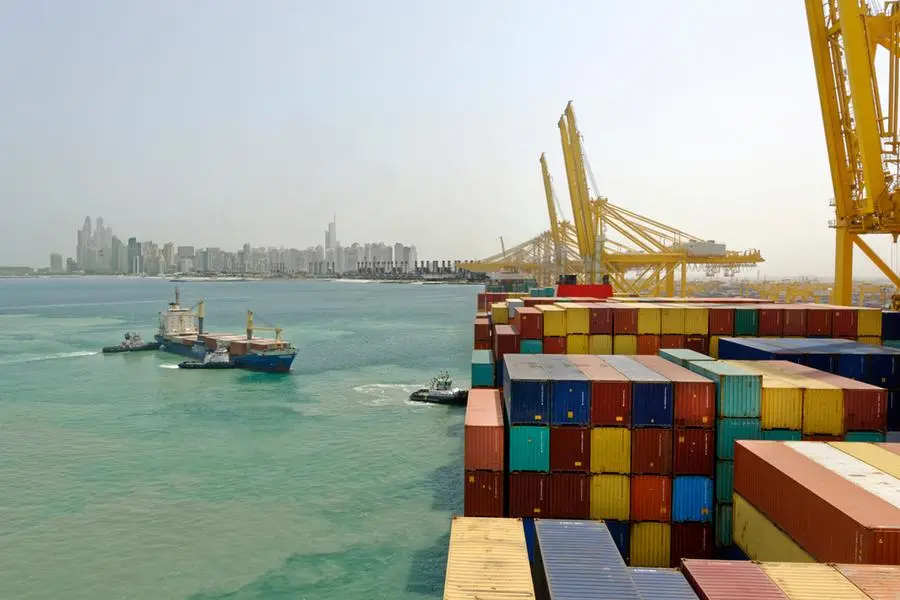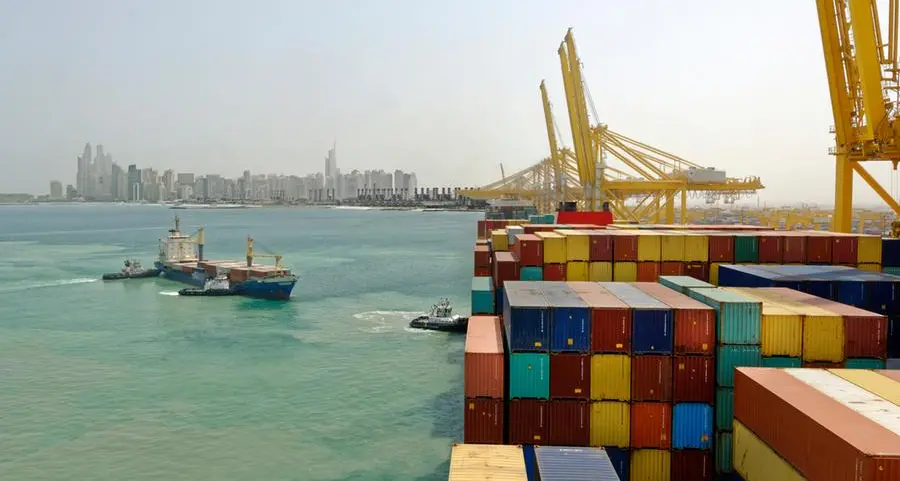PHOTO
Saudi Crown Prince Mohammed Bin Salman receives Oman's Sultan Haitham bin Tariq, at Neom airport, Saudi Arabia, July 11, 2021. Bandar Algaloud/Courtesy of Saudi Royal Court/Handout via REUTERS
The visit by Oman’s Sultan Haitham bin Tariq to Saudi Arabia was a double first. It was the first visit to the Kingdom by an Omani leader in more than a decade, and the sultan’s first foreign trip since he ascended the throne on Jan. 11 last year.
One focus of the visit was on economic cooperation between the two countries. The sectors discussed were commerce, investment promotion, and post and transport. Saudi Minister of Investment Khalid Al-Falih, Abdulsalam bin Mohammed Al-Murshidi, chairman of the Oman Investment Authority, and their teams, as well as other ministers, held meetings in the Saudi city of NEOM.
The visit was important to both countries as Saudi Arabia engages in a multi-pronged diplomatic approach with its Gulf Cooperation Council (GCC) neighbors. There are many political advantages for both countries resulting from closer cooperation.
On the geoeconomic front, the failed OPEC+ meeting last week, where Saudi Arabia and the rest of the member nations faced off against off against the UAE’s insistence on revising upwards the baseline number from which its production cuts are calculated, took center stage. In a joint statement, Oman and Saudi Arabia underscored the importance of cooperation between OPEC+ countries to stabilize the oil markets.
From an economic perspective the visit was particularly crucial for Oman. Through Omani Vision 2040 the country wants to diversify its economy and reduce the reliance on oil, just as the Kingdom is doing with Saudi Vision 2030, but Oman so far has not progressed as rapidly as its neighbor. Oman and Bahrain have been the laggards among GCC economies.
Oman, which is the Middle East’s largest oil exporter outside of OPEC, has been particularly hard hit by the fall in oil prices during the COVID-19 pandemic. In 2020, its budget deficit stood at 19.2 percent. This was the GCC’s largest, followed by Bahrain.
The fiscal deficit is expected to fall to 2.4 percent this year, according to Bloomberg. Oman plugged the hole by issuing sovereign debt — twice in the fourth quarter of 2020, followed in January by a bond offering worth $3.25 billion in three tranches. The paper was rated sub-investment grade. In a bid to capitalize on global investors’ thirst for yield, the sultanate has appointed banks to tap into international markets again this year. Oman’s debt-to-gross domestic product ratio stood at 79.2 percent at the end of last year, which was the second-highest in the GCC.
Other economic reform measures include looking at selling stakes in state-owned entities such as petroleum investment company OQ, or Oman Cement Co. SAOG. This takes a leaf out of the Saudi strategy to monetize state-owned assets to lessen the dependence on oil, as evidenced by the Kingdom listing 2 percent of Saudi Aramco on the Tadawul in 2019. These and other privatizations/initial public offerings could potentially create investment opportunities for Saudi Arabia’s Public Investment Fund, as well as private investors.
According to Bloomberg, the Omani government is also looking at the possibility of raising $3 billion through Energy Development Oman, an entity that holds a 60 percent stake in Block 6, one of the largest oil deposits in the Middle East. Such bonds would, again, create investment opportunities for sovereign wealth funds in the Middle East and beyond, as well as for a broad base of global institutional investors.
The government’s reforms also included the introduction of value added tax (VAT) in April this year at a rate of 5 percent. The sultanate is even contemplating the introduction of an income tax to help balance its budget. This is unheard of in GCC nations.
All of the above measures are both necessary and create opportunities for investors in light of Oman’s employment situation. The youth-unemployment rate was close to 14 percent in 2019, according to Statistica, which is an issue of concern in a country where the median age is 30.6 years. This is only partially mitigated by the fact that expatriates account for 38.9 percent of the sultanate’s population, as of July 2021.
Against this backdrop, closer economic cooperation with Saudi Arabia — a neighbor that also happens to be the GCC’s largest economy — becomes an imperative. The key bilateral trade and investment numbers make clear that there is plenty of room for maneuver: In 2020, Saudi investments in Oman stood at $488 million, and Oman’s exports to the Kingdom account for 4.9 percent of the country’s total exports. Some of the investment opportunities pertaining to Oman’s privatization efforts have been mentioned above. Others exist in the private sector.
In terms of upside opportunities there is also the new road between the two countries, the only direct overland route, which traverses the Empty Quarter in the Kingdom. This desert highway should shave about 880 kilometers and 12 hours off previous overland routes. It runs from the Omani border for about 550 kilometers before linking up with the key Batha-Haradh highway leading to Riyadh. The opening of the ground-breaking project will be expedited as a result of Sultan Haitham’s visit
Needless to say, this massive infrastructure project will create a bounty of opportunities in the logistics sector, as well as for the general trade of goods.
Given the proximity of the countries and their ability to cooperate in non-oil sectors, such as transport and logistics, Sultan Haitham’s visit to Riyadh was a very smart move from an economic perspective.
• Cornelia Meyer is a Ph.D.-level economist with 30 years of experience in investment banking and industry. She is chairperson and CEO of business consultancy Meyer Resources.
Twitter: @MeyerResources.
Disclaimer: This article is provided for informational purposes only. The content does not provide tax, legal or investment advice or opinion regarding the suitability, value or profitability of any particular security, portfolio or investment strategy. Read our full disclaimer policy here.
© Arab News 2021